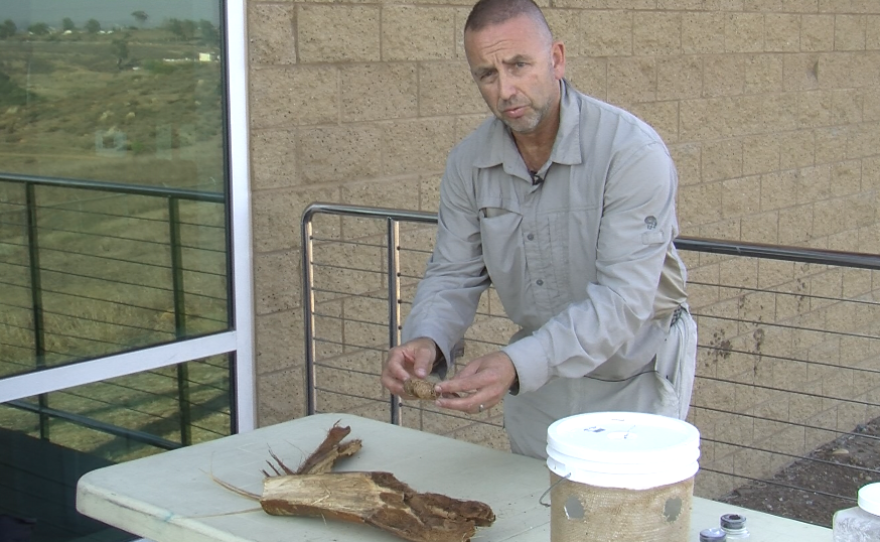Researchers in San Diego County are in a race against an invasive creature on a path of destruction. The South American palm weevil, which has traditionally been found in South and Central America, has killed hundreds of palm trees from the border to Bonita since its arrival in 2015.

“We think now the palm weevil probably has a strong foothold in San Diego County and is probably killing many more palms than we currently realize,” said Mark Hoddle, a specialist in invasive species and biological control at UC Riverside.
Hoddle and county officials held a meeting with community members Wednesday at the Sweetwater Reservoir to sound an alarm over the “significant” infestation.
Concerns are growing that the one-and-a-half-inch-long black insect has extended its reach in all directions.

“We really have no feel as to how far the weevil has spread in Southern California,” Hoddle said. "We've figured out that these weevils have the potential to fly tens of miles in a single day."
It is likely the weevils flew from Tijuana, Mexico, where infestations and dead palms had been detected in December 2010.
Hoddle said weevils kill palm trees by burrowing their eggs in palm fronds. The hatched larvae eat away at the tree until it dies. The process takes just months.
“Eventually the palm fronds, instead of going straight up and being nice and straight, start to tilt,” Hoddle said. “Then those palm fronds just fall on the ground.”
Hoddle said the first plan of attack is tracking the weevil with traps set up across the county.
“If it’s still just contained to the Chula Vista area we may have a good shot at being able to contain and eradicate it,” Hoddle said. “But if it’s spread over hundreds and hundreds of square miles of Southern California, that chore is going to be far more difficult.”
Hoddle said the weevil threatens Southern California’s $70 million ornamental palm industry and $30 million commercial date industry.
Researchers are asking for the public's help in tracking the weevil by reporting locations of dying palms and sightings of the palm weevil. People can submit photos and information to the Center for Invasive Species Research.







